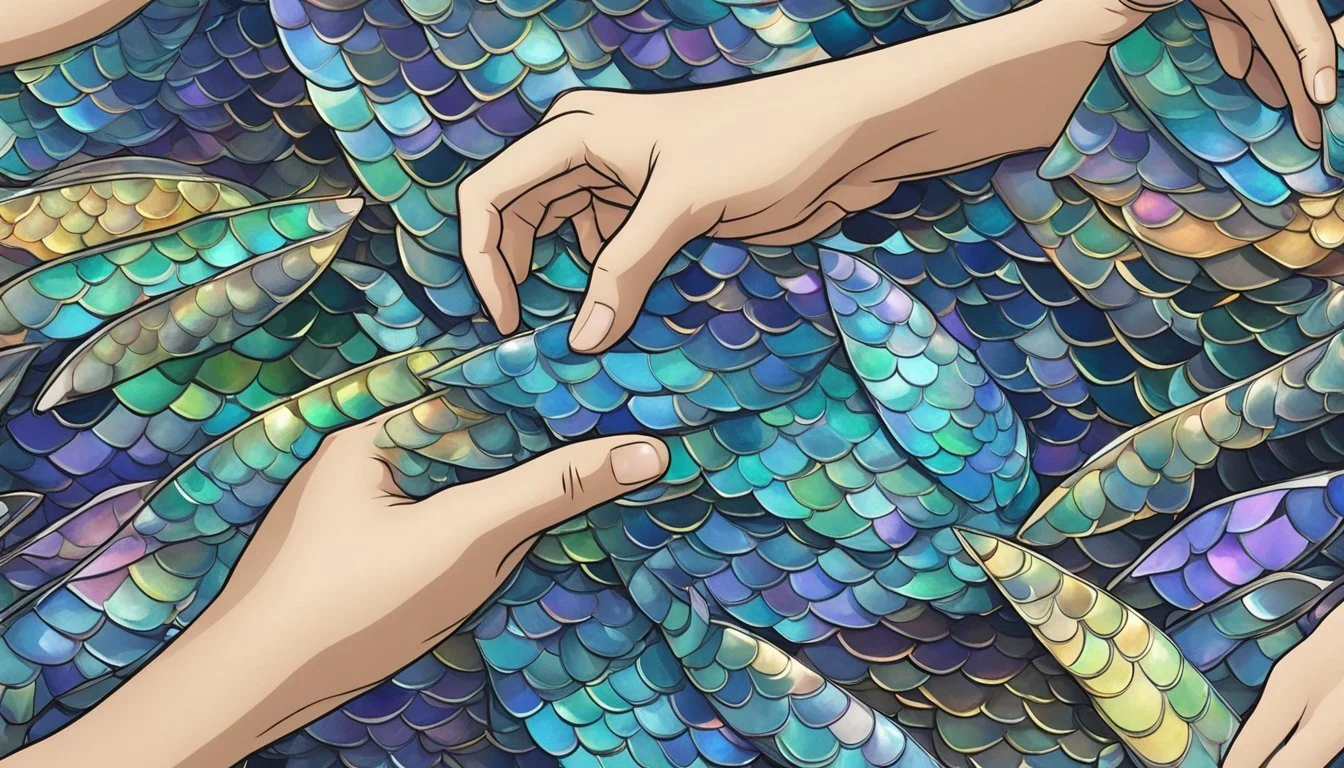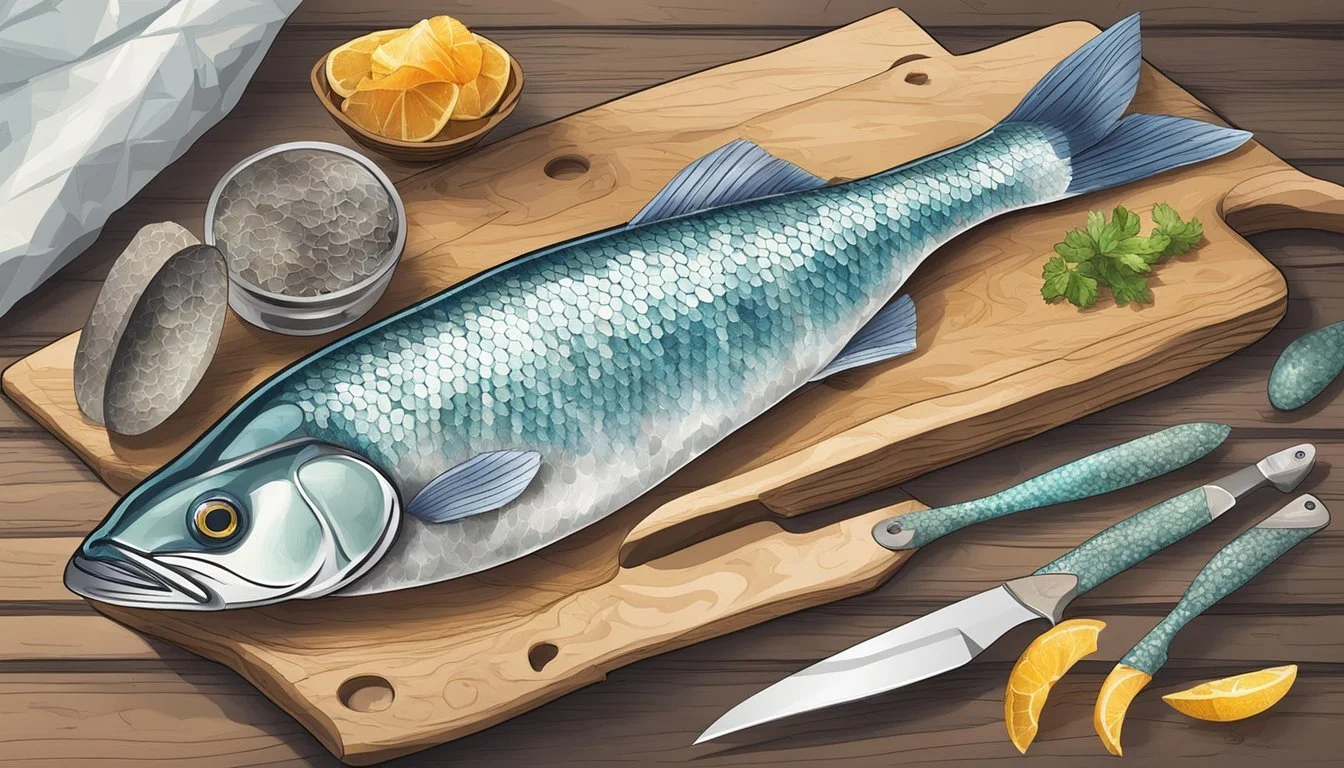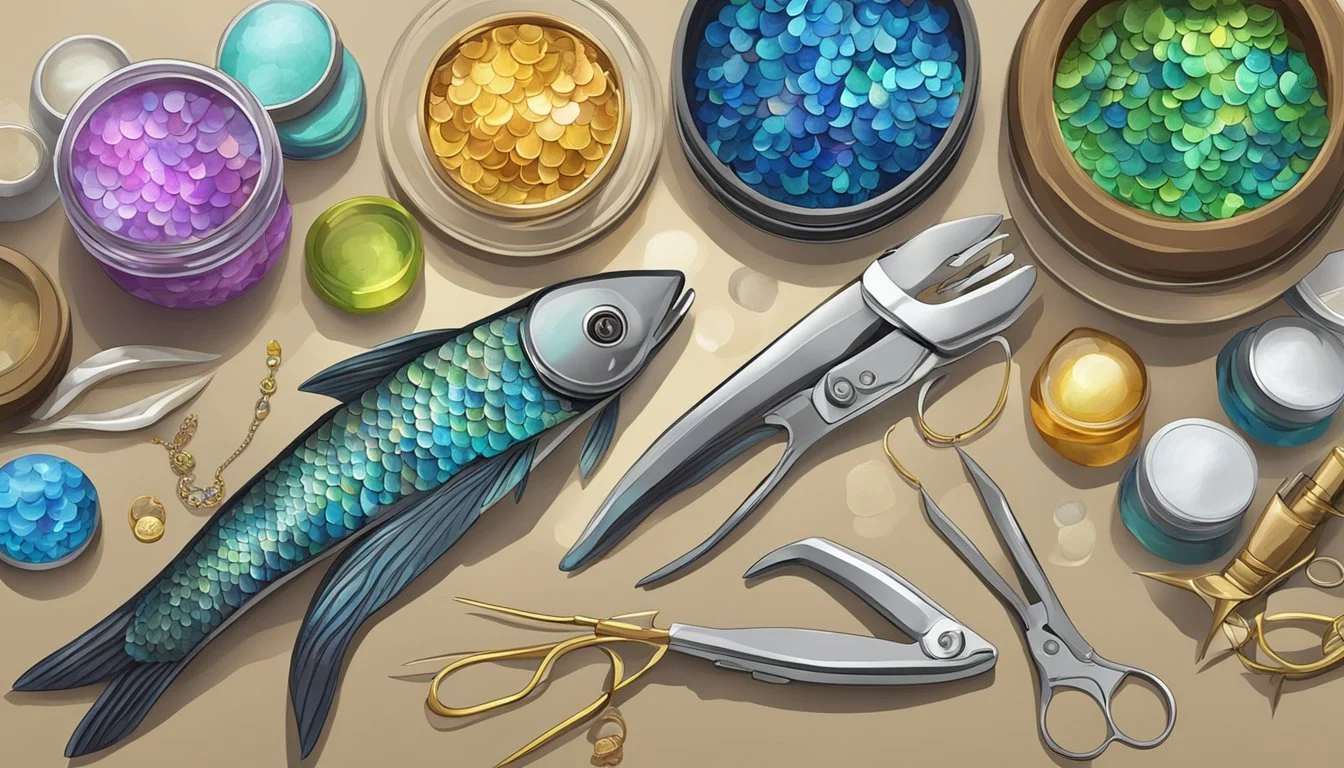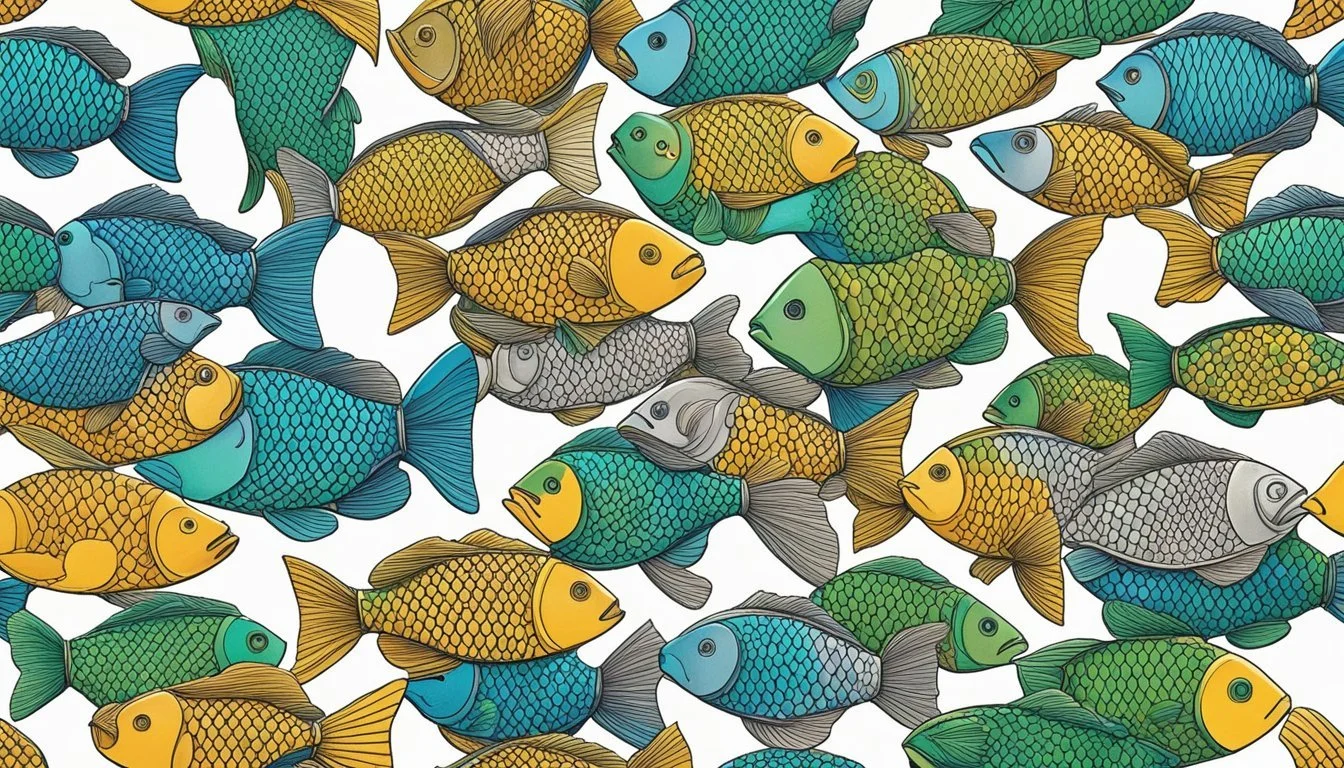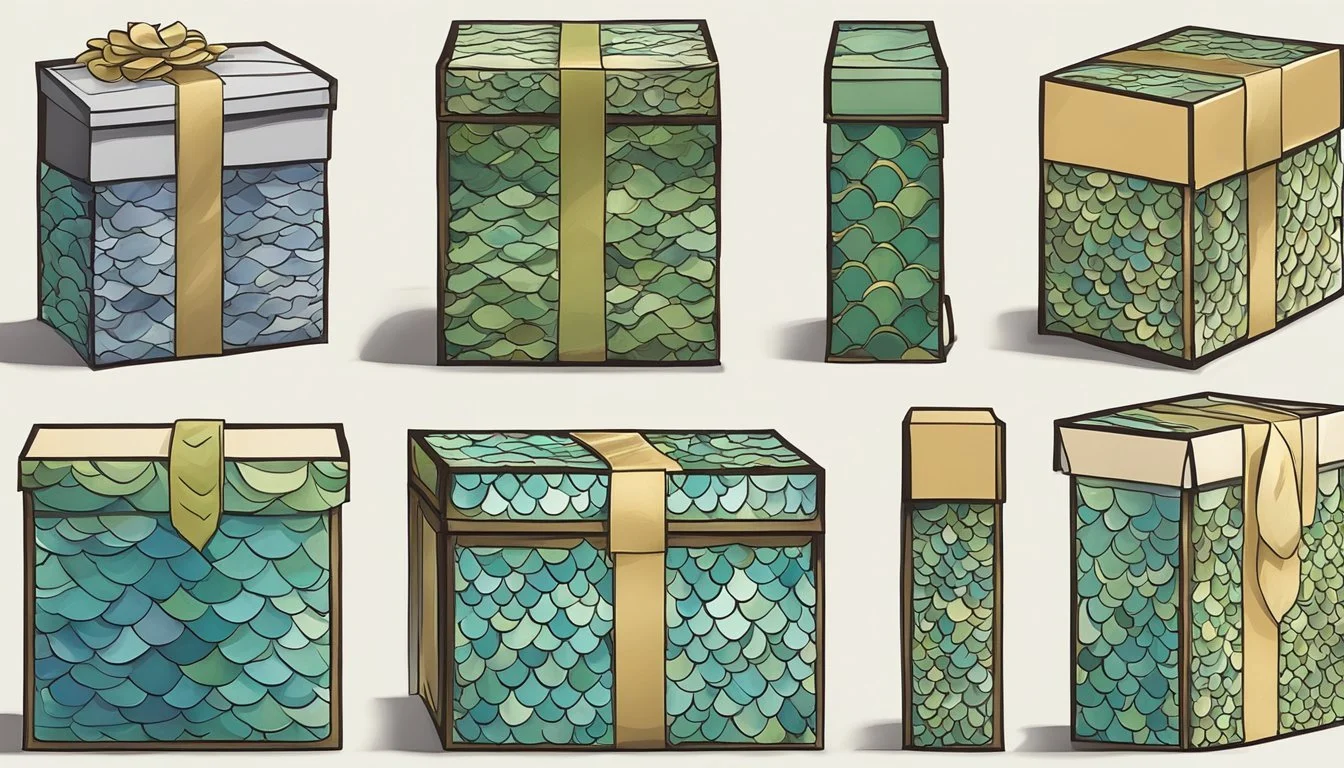The Art of Making Fish Scale Jewelry
Upcycling Kitchen Scraps into Unique Accessories
The creation of fish scale jewelry represents a unique blend of craftsmanship and environmental consciousness. Artisans turn what would be kitchen waste into striking fashion pieces, showcasing the scale's natural iridescence. This practice harks back to traditional techniques yet has found resurgence in modern eco-friendly design. The scales are carefully collected, cleaned, and dried before being transformed into wearable art. With innovative methods, they are often dyed, molded, and combined with other materials to create items that are both beautiful and sustainable, highlighting the value in materials commonly disregarded.
Each piece of fish scale jewelry is a testament to the creativity and resourcefulness of the makers. These artisans, many of whom work from their homes, contribute to their local economies while also looking after their families. The intricate process involves selecting the right scales, ensuring that they are treated to preserve their beauty, and then crafting them into delicate designs. The result is often a range of jewelry that includes necklaces, bracelets, earrings, and more, all characterized by the shimmering qualities of fish scales.
This artistic endeavor not only redefines the boundaries of traditional jewelry-making but also encourages a conversation around sustainable practices. The use of fish scales as a primary material diverts waste from landfills and minimizes environmental impact. The jewelry they create is not just an accessory but a statement of ecological awareness and the potential for innovation in reusing materials that would otherwise be discarded.
History and Significance of Fish Scale Jewelry
Fish scale jewelry has a history that intertwines with the cultural significance of its use, and over time, this art form has evolved with various techniques and applications that enhance its inherent beauty.
Cultural Relevance
Fish scales have served as materials in jewelry-making for centuries, often symbolizing abundance and prosperity in different cultures. Indigenous people around the globe, including those from the Yukon, have been known to use fish scales in their traditional adornments. They employ techniques to craft scales that mimic elements of nature, such as petals in a flower. The intrinsic value of fish scale jewelry is also steeped in symbolism, where the fish motif can represent fertility, tranquility, and the overcoming of obstacles. In Christianity, the fish symbol is linked to the teachings of Christ, enhancing the spiritual significance of these items.
Evolution of Fish Scale Art
The art of creating jewelry from fish scales has expanded beyond traditional methods to more sophisticated and diverse techniques. Artisans have discovered processes for treating scales to create a pearlescent appearance and have developed ways to adhere them onto materials like velvet, hide, or heavy art paper for relief work. This artistic medium has evolved from directly using the natural scales to incorporating digital representations, showcasing the adaptability of this craft. Today's jewelry often includes fish scales in innovative designs, indicating that the potential of this organic material is continually realized and appreciated in modern adornments.
Benefits of Using Fish Scales for Jewelry Making
Utilizing fish scales to create jewelry is not only an innovative approach to design but also comes with distinctive advantages regarding environmental sustainability and economic gain.
Environmental Impact
Fish scales that would typically be discarded as kitchen scraps assume a new life in the realm of jewelry crafting. Their use in adornment repurposes waste, thus reducing the environmental footprint associated with jewelry production. The biodegradable nature of fish scales aligns with eco-friendly practices, offering consumers a product they can love for both its aesthetics and minimal impact on the planet. Not only do they prevent additional waste by diverting it from landfills, but their procurement also does not require extra natural resources; making them a sustainable choice for jewelry.
Economic Advantage
Fishermen stand to benefit economically as the market for fish scale jewelry grows. The by-products of their primary catch turn into an additional source of profit with little to no extra cost. Local communities engaged in crafting such jewelry can stimulate their economy by creating job opportunities and tapping into the artisan market. Fish scale jewelry crafting can transform what's considered waste into a valuable resource, providing artisans with a means to support themselves financially with the added benefit of doing so sustainably.
Selecting the Right Fish Scales
When creating fish scale jewelry from kitchen scraps, selecting appropriate fish scales is vital. The quality and source of the scales determine the durability and aesthetics of the final product, as well as its environmental impact.
Identifying High-Quality Scales
High-quality scales are integral to making durable and visually appealing jewelry. One should look for scales that are:
Uniform in size: This ensures consistency in the design.
Intact: They should not have tears or cracks.
Clean: Scales must be free from residual tissues or blood.
Flexible: This indicates that they are fresh and haven't dried out excessively.
It's noteworthy that scales from larger fish often yield more usable material due to their size and thickness.
Source and Sustainability
The source of fish scales is as important as their quality. Sustainability is a key consideration; thus, one should:
Prioritize by-products: Opt for scales from fish already used for food.
Seek out local sources: This reduces transportation impacts and supports local communities.
Additionally, one might consider the species of fish. Some species have natural variations in their scales that can add unique color and texture to the jewelry.
Focusing on sustainable practices not only contributes to the preservation of marine life but also resonates well with environmentally conscious consumers.
Preparation of Fish Scales
In the craft of making fish scale jewelry, meticulous preparation of the scales is essential. They undergo a careful cleaning and preservation process to ensure durability and sheen.
Cleaning Process
Before fish scales can be used for making jewelry, they must be cleaned thoroughly to remove any fishy odor and organic material. One begins by rinsing the scales under cold running water. Then, they should soak the scales in a solution of warm water and mild dish soap to loosen residual tissue. It may be necessary to gently scrub the scales with a soft brush to dislodge impurities. Finally, the scales are rinsed again to wash away any soap residue.
Rinse under cold water
Soak in warm soapy water
Gently scrub with soft brush
Rinse off soap residue
Drying and Preservation
After cleaning, fish scales need to be dried to prevent any mold or unpleasant smells. Laying them out on a paper towel or a clean cloth in a single layer, they should be left in a warm, dry place away from direct sunlight which can cause the scales to warp or lose color. Once completely dry, preservation methods—such as coating with a clear sealant—can be applied to give the scales a protective layer, enhancing both their longevity and aesthetic pearlescent shine.
Spread in a single layer to dry
Avoid direct sunlight
Apply clear sealant for protection and shine
Designing Fish Scale Jewelry
Creating fish scale jewelry requires a delicate balance of imagination and precision. Designers often begin with a vision in mind, transforming the humble fish scale into wearable art that evokes a sense of admiration and wonder.
Creativity in Design
Designers employ a blend of aesthetic principles and innovation when conceptualizing fish scale jewelry. They might take inspiration from the natural iridescence of fish scales to craft pieces that capture light and movement. For earrings and necklaces, each scale can be painted, shaped, or assembled in a multitude to express different themes or tell a story. Whether the aim is to embody the fluidity of water or to incorporate geometric patterns, the creativity in design sets the stage for a truly unique piece of jewelry.
Themes and Motifs: Designers integrate elements from the natural world or abstract art.
Color Palette: Scales can be painted with meticulous layers to achieve the desired hue and effect.
Combining Materials and Textures
The next step in the design process revolves around the selection and combination of materials and textures. Designers often intuitively know that the juxtaposition between the organic texture of fish scales and other materials, like metal or semi-precious stones, can create an intriguing visual and tactile experience.
Materials: Common pairings may include:
Copper wire
Semi-precious stones
Beads
Texture Play: Designers may leave some scales natural to showcase their original beauty, while others could be smoothed or curled to add dimensional interest to the piece.
The choice of materials significantly impacts the final appearance, as well as how much the piece resonates with those who appreciate and love handcrafted jewelry. The merging of differing textures can yield an intricate dance between rough and smooth, matte and shiny, fostering an allure that is unique to fish scale jewelry.
Crafting Techniques
Crafting fish scale jewelry requires precision and creative flair. Mastering the techniques of cutting, shaping, coloring, and painting scales transforms simple kitchen scraps into wearable art.
Cutting and Shaping
To begin making fish scale jewelry, one needs to prepare the scales by thoroughly cleaning them to remove any fish residue. Once cleaned, the scales are soaked in water to make them pliable. Cutting involves using sharp scissors or a craft knife to create the desired shape. They may start with rough cuts, then move to more precise snips to achieve the perfect outline. Shaping can be achieved by molding the scales around forms or using tools to curl or flatten them, depending on the required design.
Coloring and Painting
After the scales are shaped, coloring them adds vibrancy and depth. The artist may use natural dyes or quality acrylic paints to ensure the hues are vivid and long-lasting. Scales should be treated with a primer to help the color adhere better and to prevent flaking. During the painting process, multiple thin layers are applied to build up the color evenly, with each layer drying completely before adding the next. For a glossy finish, a sealant is applied, which also serves to protect the paint from wear.
Assembling the Jewelry Pieces
Creating jewelry from fish scales involves meticulous handwork and creativity. Each piece demands precision, from binding components together to applying finishing touches that transform scales into wearable art.
Binding and Attaching Components
When making earrings or necklaces, the artist carefully selects fish scales based on size, color, and texture. They clean and prepare each scale, ensuring it's ready for use. The assembly begins by laying out the design and methodically binding the scales with a strong adhesive or threading them together with thin wire. They may create patterns or gradients for visual interest. For necklaces, scales are often attached to a base chain or cord, while earrings might involve affixing scales to hooks or frames.
Materials Used: Adhesive / Thin wire / Hooks or frames
Finishing Touches
Once the primary assembly is complete, the jewelry piece receives its finishing touches. This may include sealing the scales to protect against wear and adding clasps or closures to necklaces and earrings. The artist inspects each piece for any imperfections, applying additional adhesive or adjustments as needed to ensure durability and visual appeal. The final product boasts a harmonious blend of natural beauty and artistic craftsmanship.
Sealing: Protective coating
Attachments: Clasps / Closures
Inspection: Quality check for imperfections
Marketing and Selling Your Creations
The art of crafting jewelry from fish scales is a unique niche that lends itself to a distinctive market space. For artisans looking to sell their creations, developing a robust online presence and tapping into established marketplaces can significantly enhance their business's visibility and sales potential.
Building an Online Presence
Website: A well-crafted website serves as the central hub for an artist's brand. It showcases their unique fish scale jewelry and tells their crafting story. The website should include:
A gallery of high-resolution images
About page detailing their journey and process
Contact information for inquiries and custom orders
Subscription form for personalized tips and exclusive offers
Social Media: Platforms like Instagram and Facebook are key for visual marketing, allowing creators to share imagery of their jewelry, updates on new collections, and engage with a community of enthusiasts. Regular posts and stories can drive traffic to their website and marketplaces.
Leveraging Marketplaces like Etsy
Etsy: As a popular marketplace for handmade goods, Etsy can amplify a seller’s reach. To maximize their Etsy presence, makers should:
Create detailed listings with clear photos and descriptions
Employ SEO practices to improve search visibility
Offer personalized options to appeal to customers seeking custom pieces
Utilize Etsy’s promotional tools to attract more buyers
Feature Implementation on Etsy Personalization Offer custom fish scale designs Exclusivity Create limited-edition series for enthusiasts Promotion Use Etsy's built-in tools for featured listings
The combination of a personal brand website and leveraging the power of marketplaces like Etsy form a comprehensive approach to selling artisan-crafted fish scale jewelry. By ensuring high-quality product listings and engaging marketing strategies, creators can attract and retain a dedicated customer base.
Packaging and Delivery
Proper packaging and delivery methods are crucial for the successful distribution of fish scale jewelry. Not only do they protect the items during transit, but they also provide an opportunity to enhance the customer's unboxing experience, which is especially important if the jewelry is intended as a gift or part of a subscription service.
Creative Packaging Ideas
When packaging fish scale jewelry, the goal is to ensure that the item arrives in pristine condition while also providing a memorable unboxing experience. Here are some ideas:
Eco-Friendly Boxes: Use small, recyclable cardboard boxes with a clean, minimalist design to hold the jewelry. Lining the box with soft, natural fabric like organic cotton can add a layer of protection and luxury.
Personalized Notes: Including a custom note or a card explaining the origin and craftsmanship of the jewelry adds a personal touch, especially for gifts.
Decorative Elements: Adorn packages with elements that hint at the oceanic origin of the materials, such as blue and green ribbon, or a small charm shaped like a fish or a wave.
Shipping and Handling
Ensuring that fish scale jewelry reaches the customer safely and efficiently is important. Here are key considerations:
Sturdy Outer Packaging: A robust outer package helps to shield the delicate items during transit. Use padded envelopes or additional cardboard boxes for an extra layer of security.
Moisture Protection: Seal the jewelry in airtight plastic bags or include silica gel packets to prevent moisture damage.
Clear Labeling: Ensure that packages are clearly labeled with fragile stickers and have the correct address to minimize the risk of damage or loss.
Subscription Shipments: For those offering subscription services, maintaining a consistent shipping schedule and providing tracking information is essential for customer satisfaction.
Building Customer Relationships
To establish a loyal customer base, businesses in the fish scale jewelry market can focus on key strategies such as




